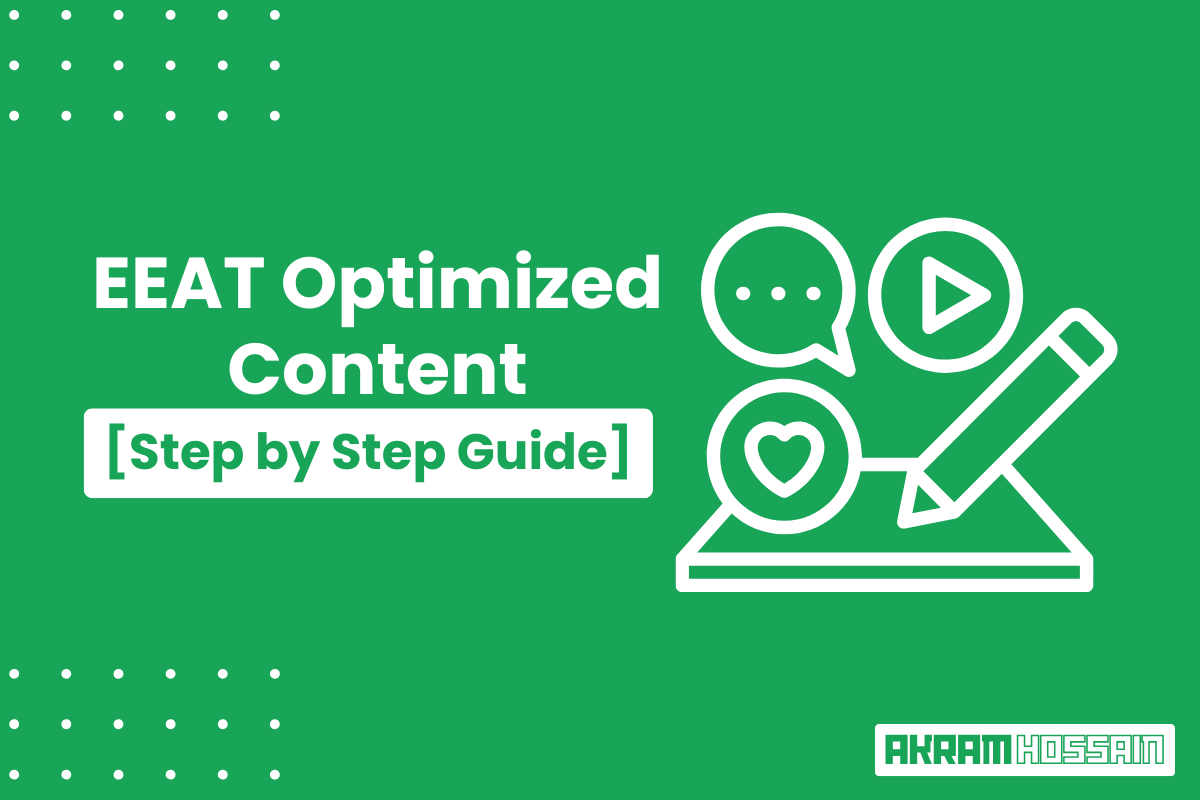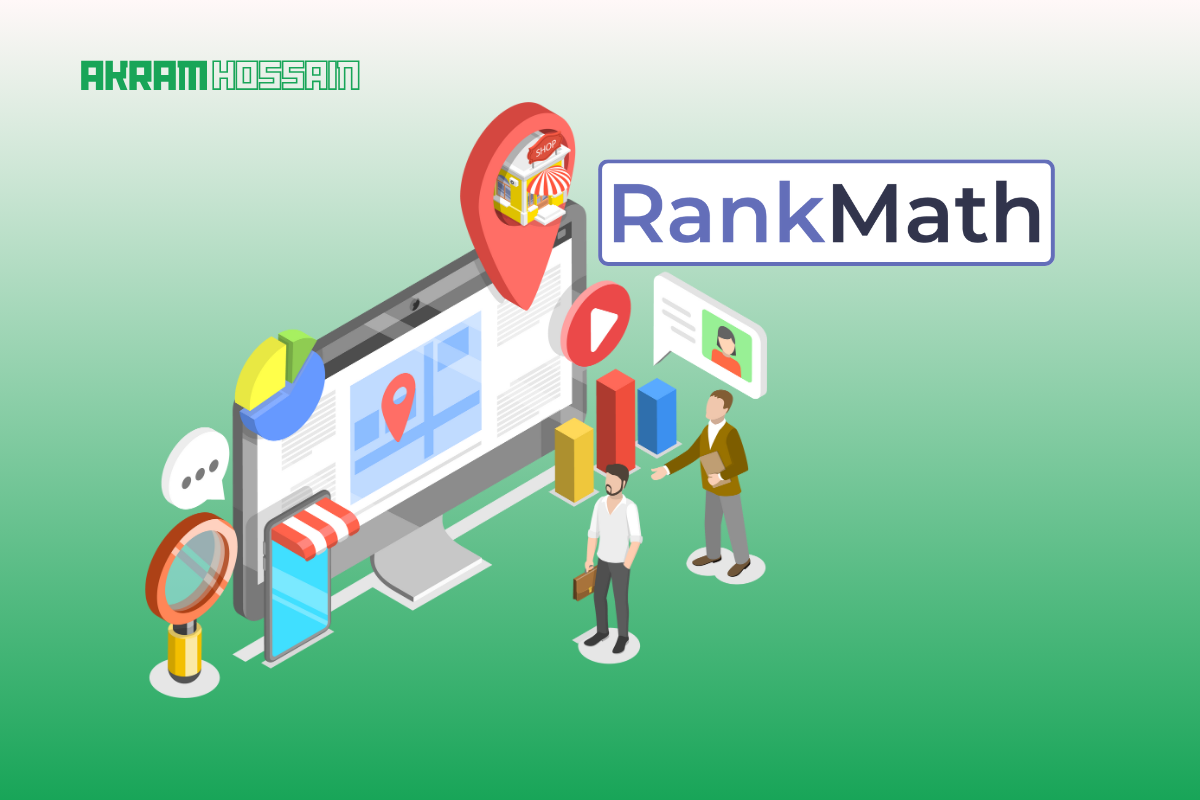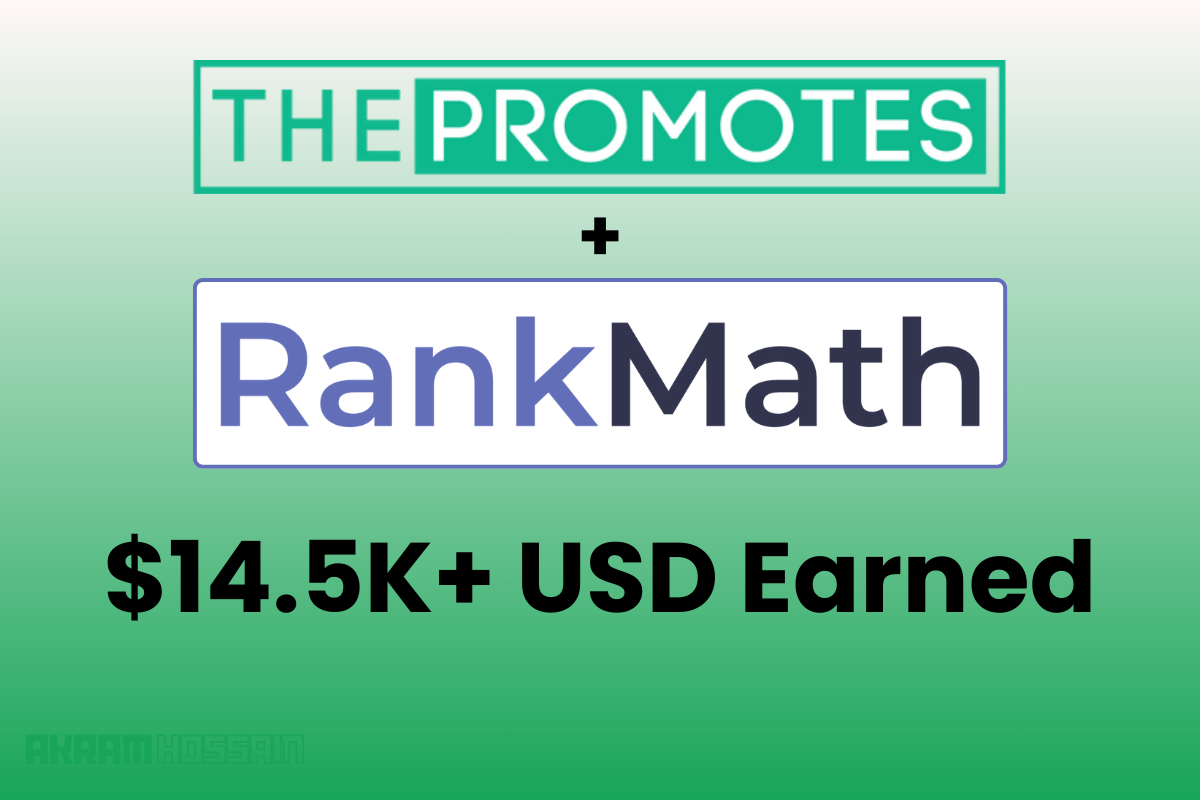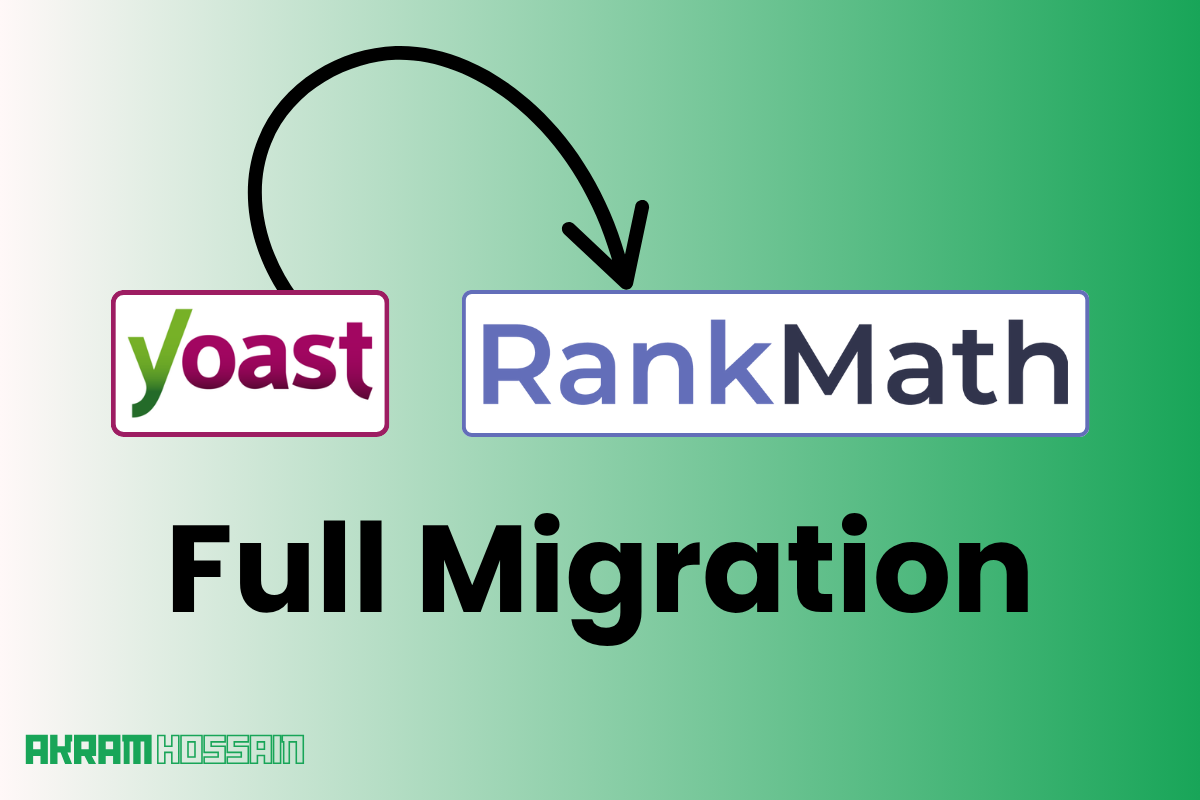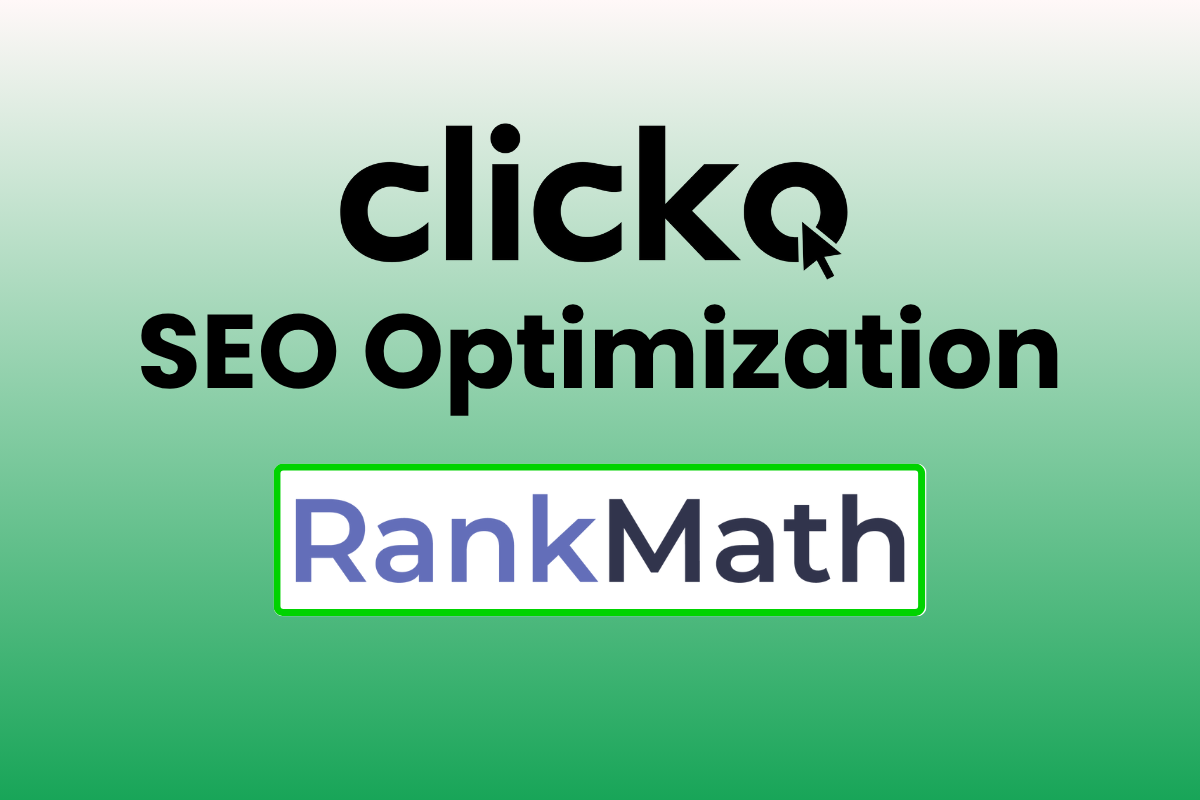In 2025, the digital landscape is more competitive than ever. With AI-generated content flooding the web, standing out requires more than just keyword optimization.
Google’s EEAT framework (Experience, Expertise, Authoritativeness, Trustworthiness) and user intent are now the cornerstones of content success.
If your content doesn’t align with these principles, it risks being buried in search results—no matter how well-optimized it is.
But don’t worry, I’ve got you covered. With over 6 years of experience in SEO, I’ve seen what works and what doesn’t.
In this guide, I’ll walk you through exactly how to create user-friendly and EEAT-compliant content, ensuring it ranks, engages, and converts.
Let’s dive in!
What is EEAT?
EEAT stands for Experience, Expertise, Authoritativeness, and Trustworthiness. It’s Google’s way of evaluating the quality of content.
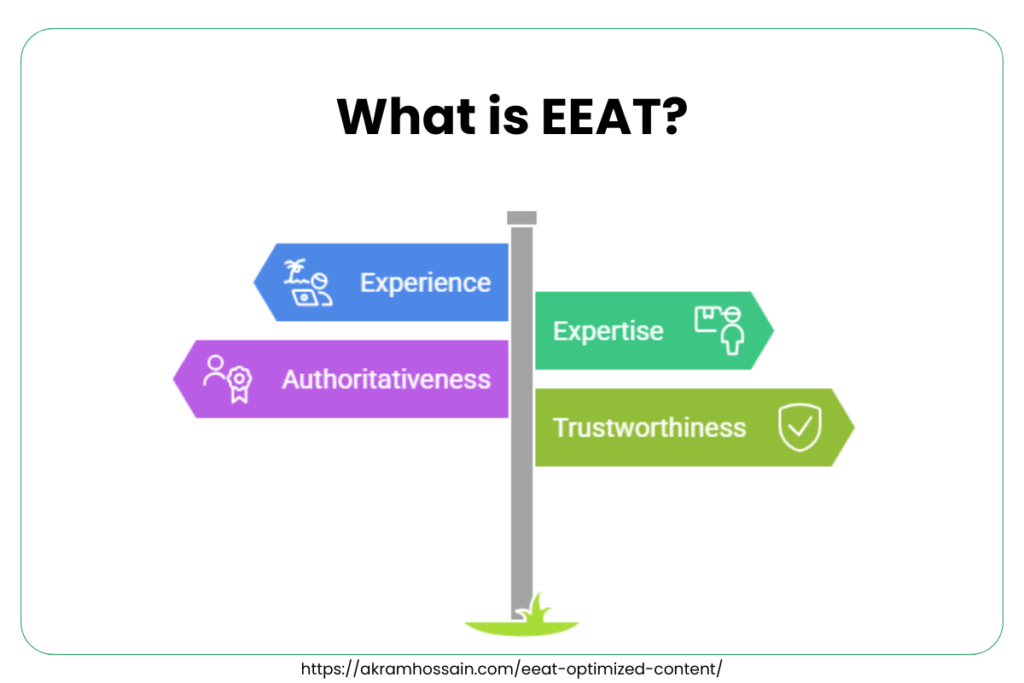
Here’s what each pillar means in 2025:
- Experience: Does the content reflect first-hand or lived experience? For example, if you have a travel blog written by someone who’s actually visited the destinations they’re writing about. You must travel to that destination to share the real experience.
- Expertise: Does the content demonstrate deep knowledge of the topic? This could be through formal education, professional experience, or extensive research. Share the core thing that you have deal with that topic.
- Authoritativeness: Is the author or website a recognized authority in the field? This is often demonstrated through backlinks, citations, and industry recognition.
- Trustworthiness: Is the content accurate, transparent, and free of misleading information? Trust is critical, especially for YMYL (Your Money or Your Life) topics like health or finance.
Write a single sentence that builds trust in your reader’s mind, and don’t try to mislead them with any misinformation.
In the age of AI, Google is doubling down on EEAT to combat low-quality, auto-generated content.
If your content doesn’t demonstrate EEAT, it won’t rank, even no matter how many keywords you stuff. Remember: keyword stuffing is a crime in content.
Pro Tip: Think of EEAT as your content’s resume. It needs to prove why it deserves to be trusted and ranked above the competition.
Hire Me as Your SEO Expert
Transparent, Quick Result, Monthly Report, and Proven Track Record
Research Your Audience & Their Intent
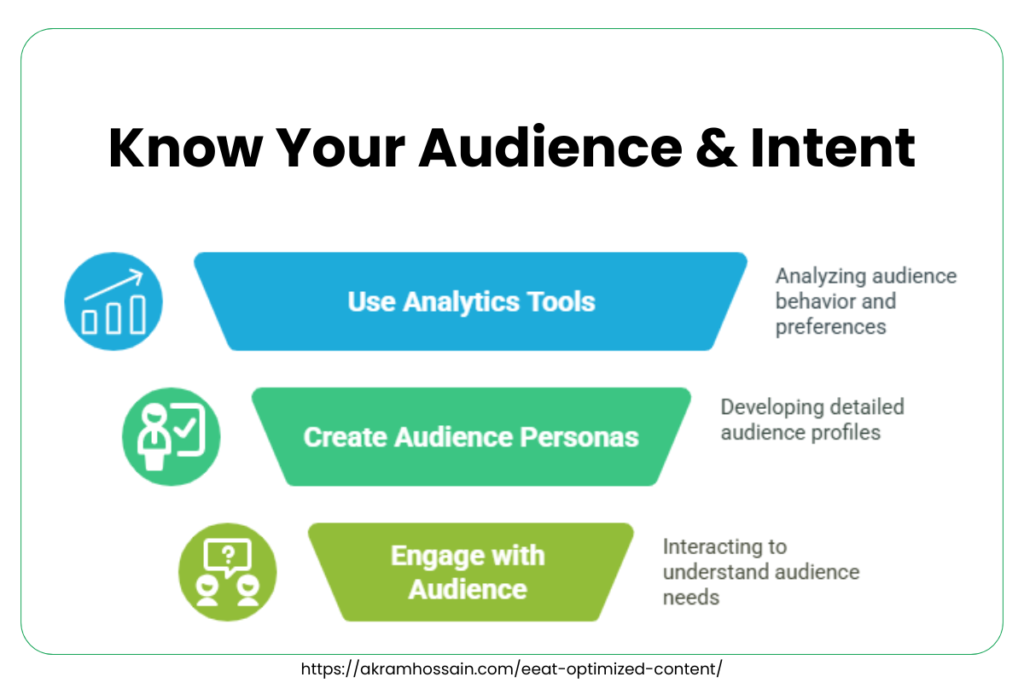
Without researching your audience and their intention regarding your content.
Keyword research is a must-have here that aligns with the content intention of what searchers want.
Before you write a single word, you need to understand who your audience is and what they care about. And if you publish this particular content, will they benefit from this?
Create a persona for a certain group of your audience and make yourself question yourself to start the process of writing and publishing.
- Use Analytics Tools: Tools like Google Analytics, SEMrush, or Ahrefs can show you who’s visiting your site, what they’re searching for, and how they’re interacting with your content.
- Create Audience Personas: Develop detailed profiles of your ideal readers. Include demographics, pain points, goals, and preferences.
- Engage with Your Audience: Use social media, surveys, or comments to ask your audience what they want to learn.
Identify User Intent
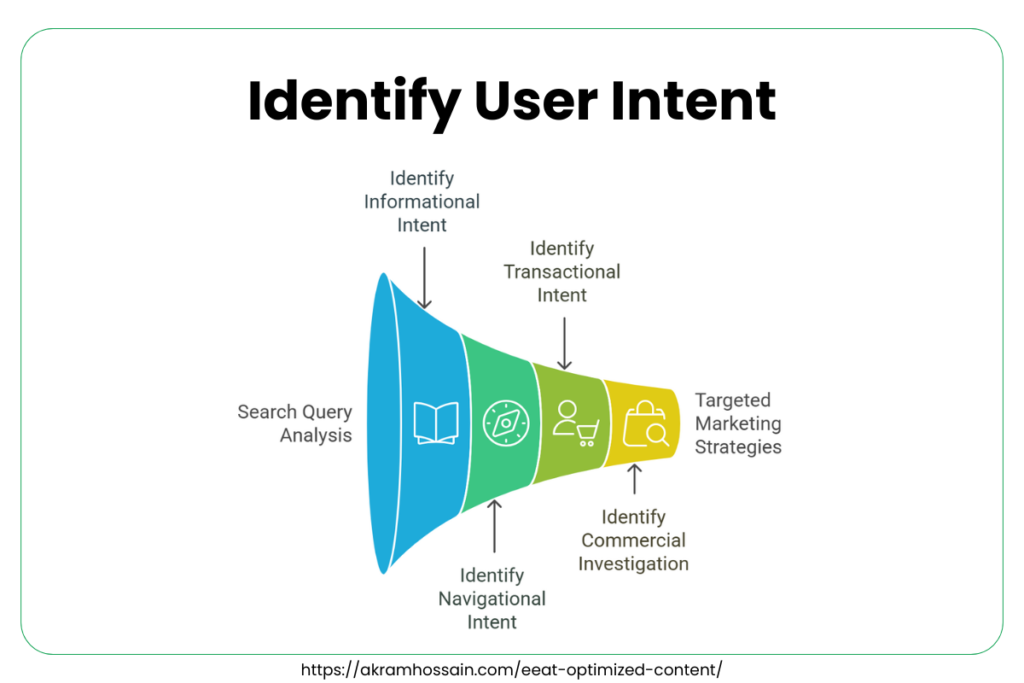
User intent is the reason behind a search query. Without knowing the searcher’s intent, you are going into a whim that won’t get back to you with traffic and sales.
Analyze and identify the intent;
- Informational Intent: The user wants answers or knowledge (e.g., “What is AI?”).
- Navigational Intent: The user is looking for a specific website or page (e.g., “Google AI blog”).
- Transactional Intent: The user wants to take action (e.g., “Buy AI software”).
- Commercial Investigation: The user is researching before making a purchase (e.g., “Best AI tools 2025”).
Depending on the searchers, these aren’t always the same; we never exactly know the intent, just assumptions.
Pro Tip: Always ask yourself: What problem is my audience trying to solve? Your content should be the solution.
Hire Me as Your SEO Expert
Transparent, Quick Result, Monthly Report, and Proven Track Record
Demonstrates Expertise
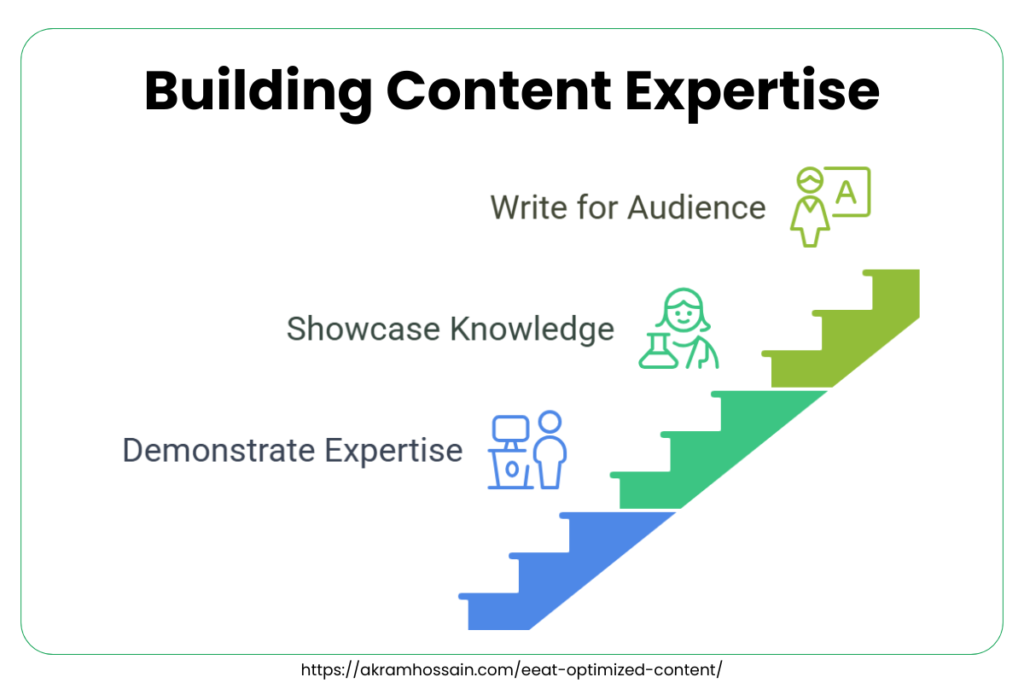
First, from the start to bottom, you should make structural content that shows your expertise in the content that you are actually in.
Just writing content without intention and enhancing the connection between you and your thoughts doesn’t make any sense to build expertise.
Showcase Your Knowledge
Your content should reflect a deep understanding of the topic. When you are writing about Travelling, you should have real experience with tours and traveling experience.
Also, if you are writing about a specific place of travel, you should know the costs of hotels, nights’ accommodation, food, and other expenses.
When you share that information, it will reflect the actual expertise of yourself that aligns with your content.
In short, here’s how to do it:
- Use Data and Research: Back up your claims with statistics, studies, or expert quotes.
- Provide Real-World Examples: Use case studies, anecdotes, or personal experiences to illustrate your points.
- Cite Credible Sources: Link to authoritative websites, research papers, or industry leaders.
Write for Your Audience’s Level
Not everyone is an expert in your field. Sharing your traveling experience with someone who is interested in going to that place but has missed the hotel booking experience may confuse them when making their traveling decision.
Also, it makes your content incomplete. To avoid those things, you should write content that completes your audience’s intent with what they are searching for.
Here’s how to make your content accessible:
- Avoid Jargon: Unless your audience is highly technical, simplify complex terms. Be transparent with the information and include no surprises.
- Use Analogies: Compare unfamiliar concepts to something your audience already understands.
- Break It Down: Use step-by-step explanations for complicated processes.
Pro Tip: If you’re not an expert on the topic, collaborate with someone who is. Your audience will notice the difference. Never write your content without experience and expertise.
Build Authoritativeness
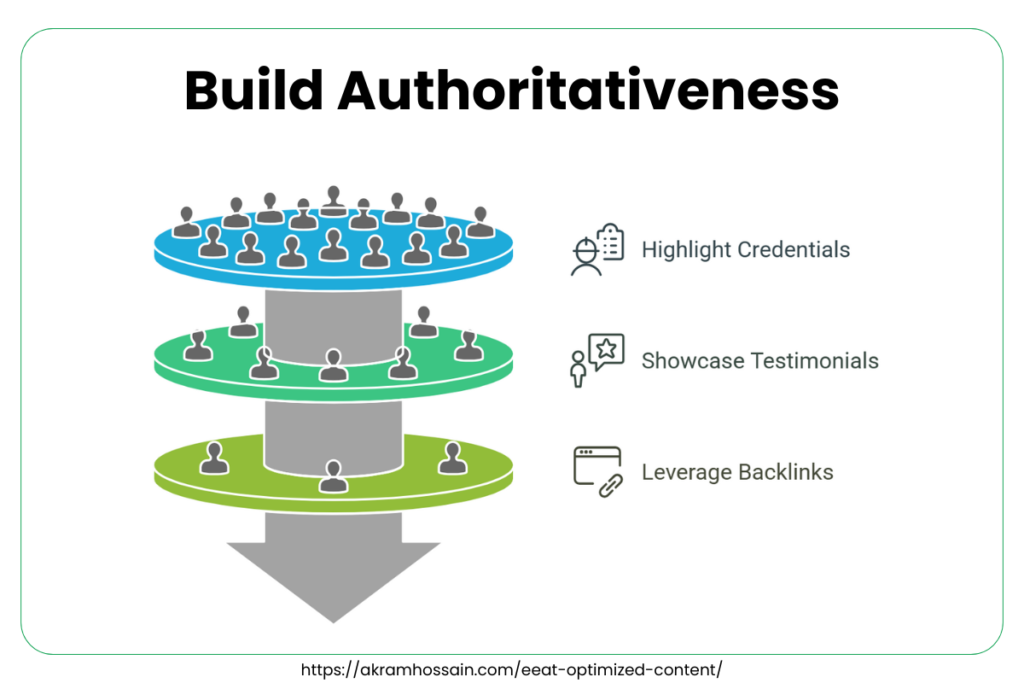
Your audience needs to know why they should trust you. Get testimonials, reputed and relevant backlinks for your website, and customer reviews against your service or business.
These will help to boost your authoritativeness.
- Highlight Credentials: Mention your education, certifications, or professional experience.
- Showcase Testimonials: Include client success stories, reviews, or media mentions.
- Leverage Backlinks: Reach out to reputable websites for backlinks, or create link-worthy content like original research or in-depth guides.
Think of your content as a portfolio; here, every piece should reinforce why you’re the go-to source in your niche.
Ensure Trustworthiness
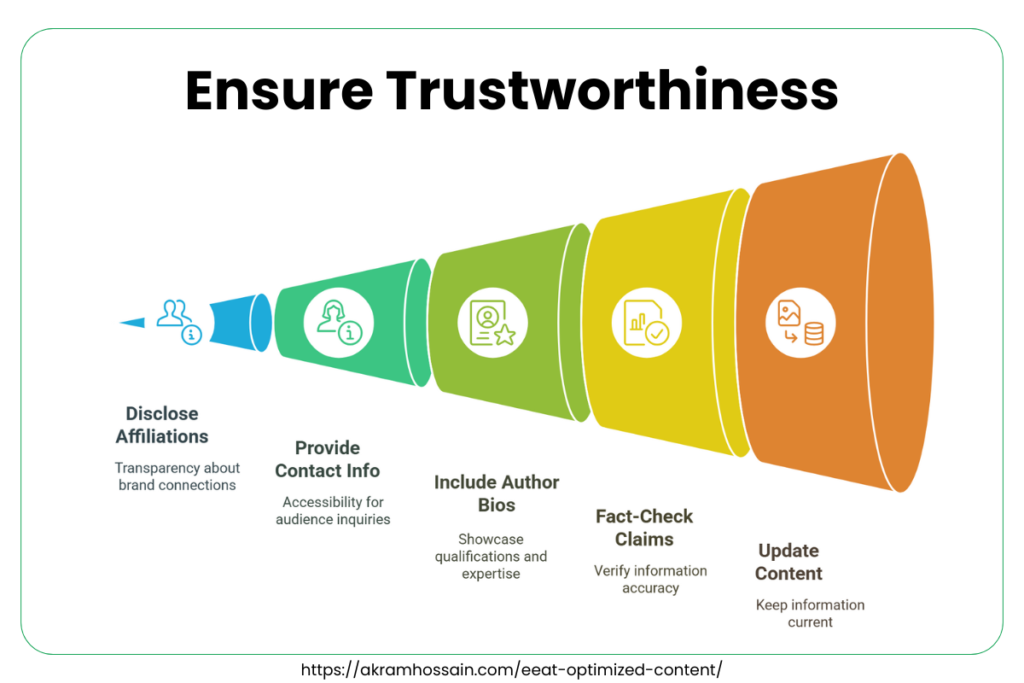
Trust is critical everywhere, especially for YMYL topics. If you aren’t an expert in these types of models, don’t write or publish content; it’s harmful to your audience as well as society.
Try to give authentic and accurate information in terms of the health and wealth sector online.
- Disclose Affiliations: Clearly state if you’re affiliated with a brand or product.
- Provide Contact Information: Make it easy for users to reach you.
- Include Author Bios: Show who’s behind the content and why they’re qualified.
- Fact-Check Everything: Verify every claim, statistic, and source; never input any data without checking its authenticity.
- Regularly Update Content: Refresh old posts with new information or insights; it helps readers get the latest information from you.
Trust is hard to earn but easy to lose. Always prioritize accuracy and honesty. Don’t promote such a thing you didn’t use or try by yourself for your project or your own.
Sometimes, fake products or tools may harm your audience with your unknown responsibility.
Hire Me as Your SEO Expert
Transparent, Quick Result, Monthly Report, and Proven Track Record
Make Your Content User-Friendly
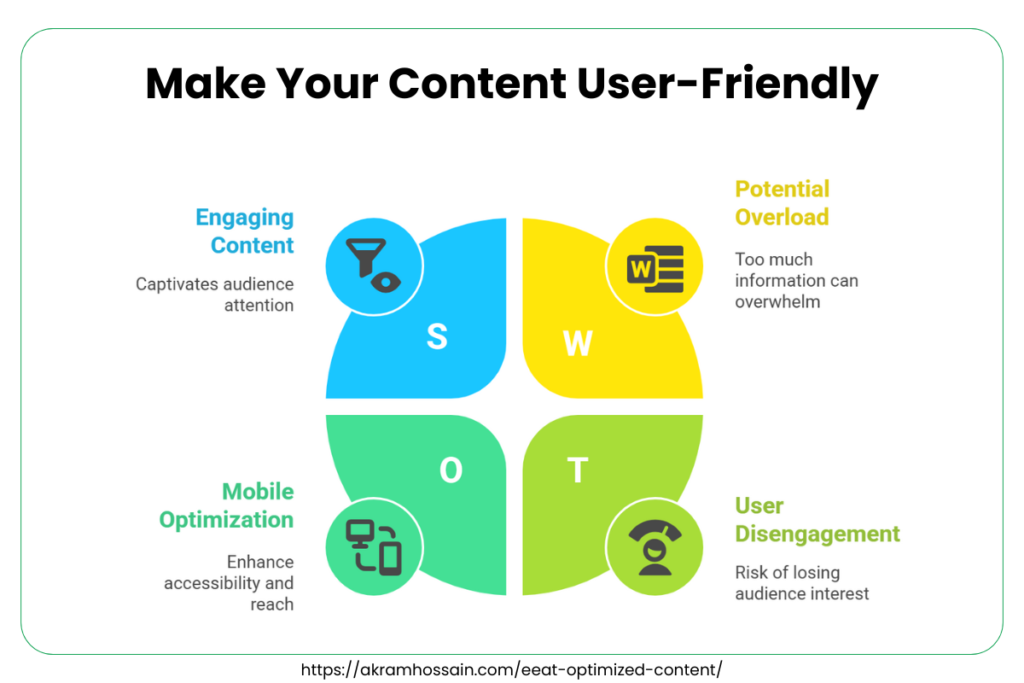
Talk to your audience, your readers, so they feel you are in one position and write that content only for them. If you can feel this in their mind, you are successful in content publishing with “user-friendly” terms.
Structure for Readability
- Use Headings: Break up text with H1, H2, and H3 tags. (H4-H6 isn’t recommended to use in your blog post)
- Write Short Paragraphs: Keep paragraphs to 2-3 sentences. You know, users only scan, and they don’t have enough time to read your content word by word. Keep it concise, which passes to the core value of your blog post.
- Use Bullet Points and Lists: Make key points easy to scan the important and highlighted points.
Optimize for Mobile
- Ensure Responsiveness: Your content and webpage structure should look great on all devices. Mobile responsiveness is a must thing for any conditions.
- Improve Loading Speed: Compress images and use a fast hosting provider. Also, you can use CDN for a faster-loading website.
Add Visuals
- Use Images and Infographics: Make your content more engaging and appealing grab readers’ attention and increase user session time.
- Include Videos: Explain complex topics visually with a voice that will h
- Add Alt Text: Improve accessibility and SEO. It’s not a visible thing for your readers, but search engines should understand what the image is about.
If your content feels like a wall of text, your audience will bounce. Keep it scannable and visually appealing.
Align Content with User Intent
I mentioned earlier that content should be aligned with the user intent which is the ultimate goal for any content. Writing content without purpose may cost you time and effort.
Knowing your audience and what they want and are actually looking for is crucial. Thinking from your audience’s perspective helps you understand the keyword value and purpose from your end.
Match Content to Intent
- Informational Intent: Provide detailed answers and FAQs. Complete each and every single line with the information that you are promising in the blog title; don’t be stingy.
- Transactional Intent: Include clear CTAs and product details. When you are writing to collect leads or sales, make it clear and handy to catch the lead.
- Commercial Investigation: Offer comparisons, reviews, and pros/cons, and show your real experience with that service or product.
Anticipate Follow-Up Questions
- Use Tools: Leverage Google’s “People Also Ask” or AnswerThePublic to get the relevant questions and provide the answers according to your own experience and expertise to help them get into it.
- Address Queries: Answer related questions in your content or a dedicated FAQ section. Also, you can add any how-to or what-type section to complete your FAQs.
Your content should feel like a conversation that feels like you are talking 1:1. Answer their questions before they even ask.
Optimize for SEO in 2025
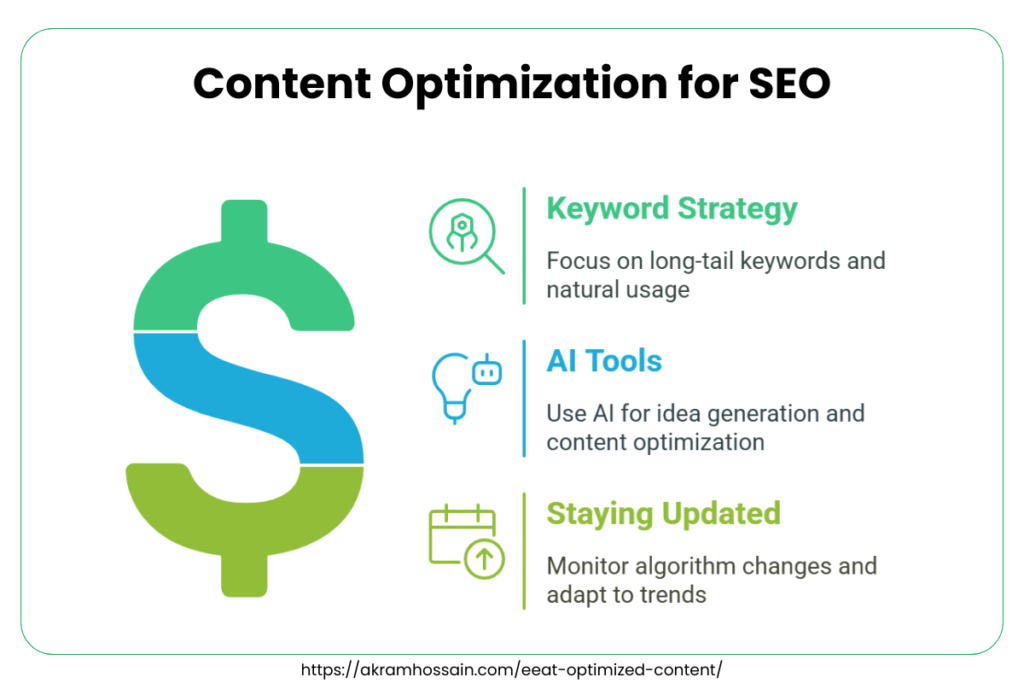
What do you think in 2025 about optimized and EEAT-compliant content? Does SEO-optimized content exist for ranking?
Yes, it’s 100% to get a higher rank if you produce high-quality content for your audience, not for search engine ranking.
Some key points you should fill up to get ranked on search engines like Google with a focused strategy.
Keyword Strategy
- Focus on Long-Tail Keywords: In the beginning, try to capture a narrow audience persona with long-tail keywords. These help you rank faster with less audience and align better with user intent.
- Use Keywords Naturally: You are writing for your audience; don’t try to push the keyword unnecessarily that may get boring to read. Try to avoid stuffing and prioritize readability.
Leverage AI Tools
- Generate Ideas: AI can’t replace human emotions and your own style. You should use tools like ChatGPT or Jasper for inspiration, but write by yourself.
- Optimize Content: Use AI to improve your content’s readability and structure.
Stay Updated
- Monitor Algorithm Changes: Fresh, unique, updated content helps users get authentic information. Keep an eye on updates like Google’s AI Overviews.
- Adapt to Trends: Stay ahead of shifts in user behavior and technology.
SEO isn’t a one-time task. To stay ahead, regularly audit and update your content according to Google algorithm updates.
Hire Me as Your SEO Expert
Transparent, Quick Result, Monthly Report, and Proven Track Record
Test and Iterate
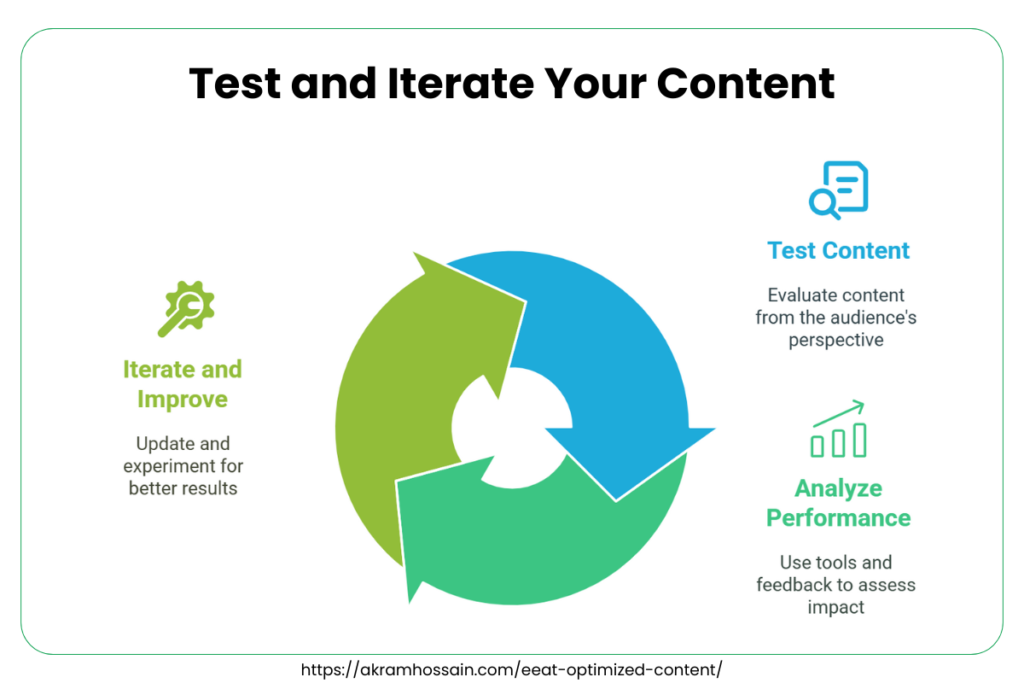
Before publishing any content, test it from the audience’s point of view. This helps you understand the quality of the actual content.
Using your own thoughts and experience ensures the content coherence, truthness, trustworthiness, and authenticity that aligns with readers’ perspectives.
Analyze Performance
- Use Tools: Track rankings, keyword positions, traffic, medium, and engagement with Google Search Console, SEMrush, or Ahrefs.
- Gather Feedback: Ask your audience for input through surveys or comments. It helps to improve your content according to your reader’s desire.
Iterate and Improve
- Update Underperforming Content: Again, Refresh posts based on data, metrics, and other information that you should add to your content and feedback.
- Experiment: Test different formats, headlines, or CTAs and see which one will perform well after A/B testing.
The best content is never finished, it’s always evolving. Always try to provide quality content to your audience so that they can get authentic information from you.
Conclusion
I know you can’t optimize your content the first time you write content or start blogging. It takes time and effort to produce high-quality content for your audience.
But in this guide, you will know how you can manage EEAT to dominate the online in 2025.
Remember, creating EEAT-compliant, user-friendly content isn’t just about ranking; it’s about building trust, demonstrating expertise, and delivering value.
